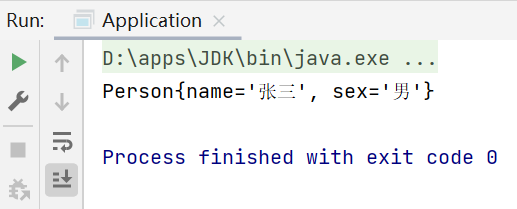Java常用类05¶
5.其他常用类¶
5.1Math类¶
java.lang.Math提供了一系列静态方法用于科学计算;其方法的参数和返回值类型一般为double型。如果需要更加强大的数学运算能力,计算高等数学中相关内容,可以使用apache commons下面的Math类库。
package li.normalclass.other;
public class TestMath {
public static void main(String[] args) {
System.out.println(Math.PI);//PI
System.out.println(Math.random());//随机数
System.out.println(Math.abs(-5));//absolute 求绝对值
System.out.println(Math.floor(4.5));//向下取整 4.0
System.out.println(Math.ceil(4.5));//向上取整 5.0
System.out.println(Math.round(4.5));//四舍五入 5
System.out.println(Math.pow(2,5));//幂指数 2的5次方 32.0
System.out.println(Math.signum(-50.5));//判断符号-->负数返回-1.0
System.out.println(Math.signum(123));//整数返回1.0
System.out.println(Math.signum(0));//0返回0.0
System.out.println(Math.sqrt(25));//开方 5.0
}
}
5.2Random类¶
Math中虽然为我们提供了产生随机数的方法Math.random(),但是通常我们需要的随机数并不是[0,1)之间的double类型的数据,这就需要对其进行一些复杂的运算。如果使用Math.random()计算过于复杂的话,我们可以使用额外一种方式得到随机数,即Random类,这个类是专门用来生成随机数的,并且Math.random()底层调用的就是Random类的nextDouble()方法。
构造方法:
Random() 创建一个新的随机数生成器
Random(long seed) 使用单个long种子创建一个新的随机数生成器
只要种子数和nextInt()中的参数一致的话,每次生成的随机数列都是一样的(伪随机数)
例子:
package li.normalclass.other;
import java.util.Random;
/*
Math.random()底层调用的就是Random类的nextDouble()方法
产生[0,1)之间的随机double数
*/
public class TestRandom {
public static void main(String[] args) {
//随机数的生成是从种子值开始。 如果反复使用同一个种子,就会生成相同的数字系列,
// 产生不同序列的一种方法是使种子值与时间相关
Random rand = new Random(System.nanoTime());
for (int i = 0; i < 10; i++) {
//System.out.println(rand.nextDouble());
System.out.println(rand.nextInt(20));//[0,20)
}
//生成一个从[10,20]的随机整数
//思路:即[10,21)----即[0,11)+10
for (int i = 0; i < 10; i++) {
System.out.println(rand.nextInt(11)+10);
}
}
}
5.3枚举¶
JDK1.5引入枚举类型。枚举类型的定义包括枚举声明和枚举体。枚举体就是放置一些常量。定义枚举要使用关键字enum关键字。对于性别、季节、星期几等内容,如果定义为字符串类型,是很难限制其取值的。采用枚举可以轻松解决该问题。
所有的枚举类型隐形地继承自java.lang.Enum。枚举类型实质上还是类!而每个被枚举的成员实质就是一个枚举类型的实例,它们默认都是pubilc static final 修饰的。可以直接通过枚举类型名使用它们
注意:
- 当你需要定义一组常量时,尽量枚举类型
- 另外尽量不要使用枚举的高级特性
例子:
- 定义枚举
- 变量定义为枚举类型
- 枚举变量的赋值
package li.normalclass.other;
//性别的枚举定义
public enum Gender {
男,女
}
package li.normalclass.other;
public class Person {
private String name ;
private Gender sex ;//变量定义为枚举类型
public Person() {
}
public Person(String name, Gender sex) {
this.name = name;
this.sex = sex;
}
public String getName() {
return name;
}
public void setName(String name) {
this.name = name;
}
public Gender getSex() {
return sex;
}
public void setSex(Gender sex) {
this.sex = sex;
}
@Override
public String toString() {
return "Person{" +
"name='" + name + '\'' +
", sex='" + sex + '\'' +
'}';
}
}
package li.normalclass.other;
public class Application {
public static void main(String[] args) {
// 使用枚举类来定义性别
Person person = new Person("张三",Gender.男);//枚举变量的赋值
System.out.println(person);
}
}

例子2:
package li.normalclass.other;
public enum Season {
春,夏,秋,冬
}
package li.normalclass.other;
public class TestSeason {
public static void main(String[] args) {
//定义一个枚举变量
Season season ;
//给枚举变量赋值
season = Season.冬;
//switch
switch(season){
case 春:
System.out.println("踏青 放风筝 春意盎然");break;
case 夏:
System.out.println("吃西瓜 吃雪糕 夏日炎炎");break;
case 秋:
System.out.println("赏菊 登高 秋高气爽");break;
case 冬:
System.out.println("滑冰 打雪仗 寒冬腊月");break;
}
}
}
